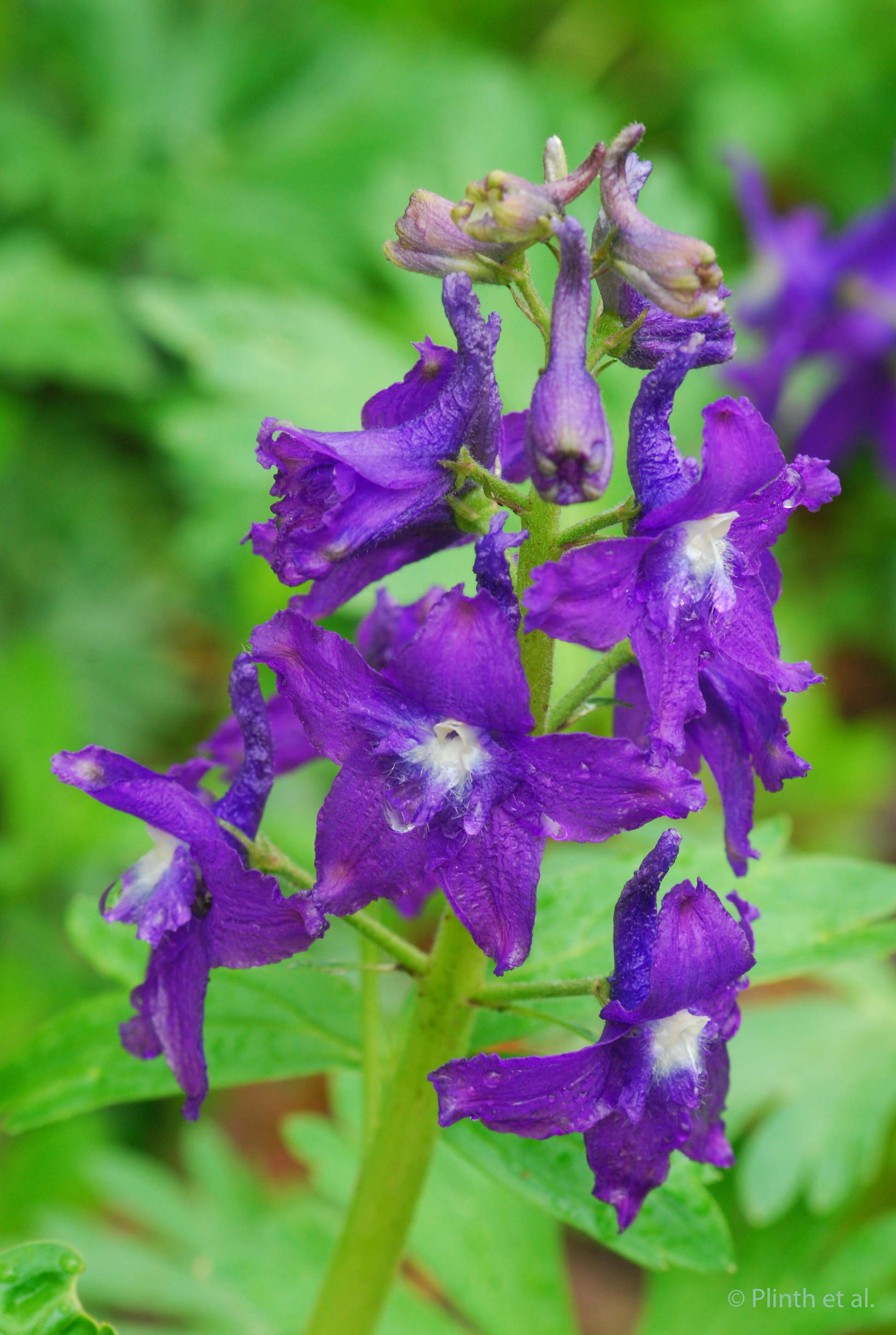Delphiniums incite reverence for their crystalline blues, purples, and whites rare in the floral world. They seem even rarefied when their temperament is best appeased in cool, cloudy climates. Countless gardeners have coddled delphiniums with variable success - some, including myself, enduring heartbreak at seeing flowering stems broken from wind and rain or the plants succumbing to summer heat, while others stand elated, like proud parents at their children's graduation.
North America is home to approximately sixty species, most of which are found in the West Coast and Interior West (Flora of North America Vol. 3). Here in eastern Pennsylvania, we grow Delphinium tricorne. Our native species may not have the wattage power of its gargantuan cousins, yet its deep blue to violet hue more than compensates in intensity. Even a solitary plant can steal the scene in the crowded spring arena. They inhabit deciduous and sloped woodlands, moist ravines, and partially shaded rock sides throughout eastern U.S. (from Pennsylvania to Nebraska and outwards to Minnesota). Their flowering coincides with trilliums, shooting stars (Dodecatheon), foamflowers (Tiarella), and phlox (Phlox divaricata and P. stolonifera), all of which enjoy the same moist woodland conditions. At Mt. Cuba Center, Greenville, Delaware, drifts of D. tricorne are planted with Polemonium reptans (Jacob's ladder), the lighter grey-purple of the latter setting off the iridescent violet of the former.
Like other spring ephemerals, D. tricorne disappears in summer until the following spring. The tuberous rootstock allows the plant to withstand drought and multiply vegetatively via offsets. Seed, which resemble tiny black beads, can be harvested in early summer. They require stratification and seedlings should be left in the containers before they are large enough to transplant individually in pots or in the garden.
~E


